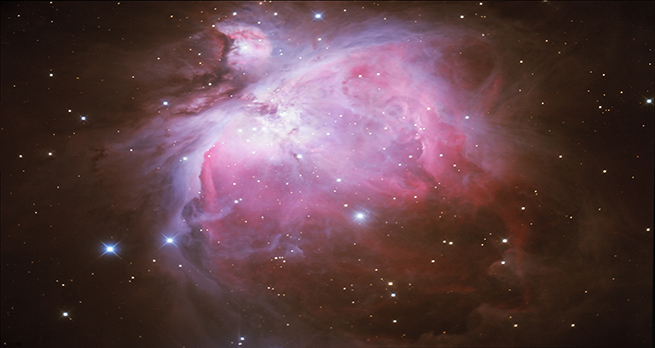Orion Glossary
Special | A | B | C | D | E | F | G | H | I | J | K | L | M | N | O | P | Q | R | S | T | U | V | W | X | Y | Z | ALL
I |
|---|
interstellar mediumThe very thin gas and tiny specks of dust that lie between the stars. | |
iron groupA subset of heavy metallic elements, such as iron, chromium and nickel that are the endpoints of nuclear fusion reactions in massive stars. | |
isotopeAtoms with the same number of protons in their nuclei but different numbers of neutrons are called isotopes. Because they have the same number of protons, they have the same atomic number and are atoms of the same chemical element. But because of the different number of neutrons, they differ in mass number. | |
K |
|---|
Kuiper BeltThe region of the Solar System, beyond the orbit of Neptune, containing many icy-rocky bodies, including dwarf planets (such as Pluto) with relatively low inclination orbits. The Kuiper Belt is sometimes called the Edgeworth-Kuiper Belt and is a sub-set of trans-Neptunian objects. | |
L |
|---|
Local GroupThe grouping of galaxies in the neighbourhood of our galaxy. It contains about 40 known galaxies including the Milky Way and all the other galaxies within about three or four million light years. | |
local superclusterThe supercluster of galaxies centred on the rich Virgo cluster of galaxies and including the Local Group as an outlying constituent. | |
luminosityThe amount of power emitted by a luminous object such as a star or galaxy, in the form of light or other electromagnetic radiation. It is related to the observed brightness of an object by the relationship: luminosity is proportional to brightness multiplied by distance squared. Luminosity may be measured in the unit of watts. | |
M |
|---|
magnitude scaleAn historical, logarithmic scale devised to represent the observed brightness of astronomical objects such as stars. | |
main sequenceThe portion of the lifetime of a star during which it produces energy via the fusion of hydrogen to helium in its core. A star will remain on the Main Seqeunce for the majority of its total lifetime. | |
